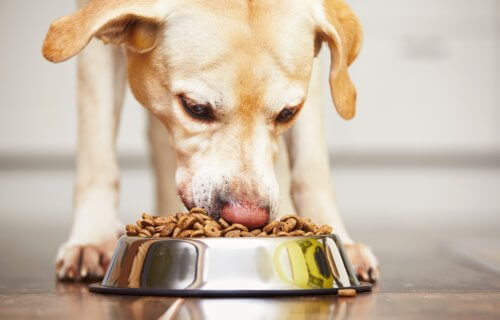SÃO PAULO, Brazil — Feeding a dog or cat only wet food could produce as much carbon dioxide as driving 30,000 miles a year in an average car, according to a new study.
That is almost seven times as much CO2 as a dry food diet, and researchers in Brazil say pet owners who switch to dry food can feed their animals more sustainably while still providing them with enough nutrients and calories.
The worldwide population of cats and dogs continues to grow. Currently, the U.S. has around 76.8 million dogs and 58.4 million cats. Meanwhile, Brazil has 52.2 million dogs and China has 53.1 million cats.
Dr. Marcio Brunetto and colleagues at the University of São Paulo decided to investigate the environmental impacts of pet diets – including greenhouse gas emissions and land and water use. The team studied 618 dog diets and 320 cat diets in Brazil. They looked at commercial wet and dry diets found on the websites of three major Brazilian pet food retailers.
READ: Best Cat Foods Of 2022: Top 4 Brands Recommended By Expert Websites
Additionally, study authors compared these diets to homemade diets – featuring food produced by companies, or food cooked by owners at home using recipes provided by companies. The research team also assessed the nutritional and calorific make-up of the different diets.
They found that with each variable taken into account, wet diets for cats and dogs had the greatest environmental impact, particularly compared to dry diets. Homemade diets tended to have intermediary environmental impacts, although water usage in homemade cat diets was similar to dry diets.
The researchers estimate that a 22-pound dog consuming on average 534 calories per day would be responsible for 1,825 pounds of CO2 per year when fed a dry diet — compared to 14,420 pounds of CO2 per year for a wet diet – an almost seven-fold increase (689%).
READ: Best Dog Foods Of 2022: Top 4 Brands Most Recommended By Expert Websites
The wet food estimate is as much carbon dioxide as a car would produce by driving 30,000 miles (more than the circumference of the Earth) each year. Dry diets provided the highest amount of energy per gram while wet diets and homemade diets provided higher amounts of protein.
Wet diets provided almost twice as much energy from their animal ingredients in comparison to dry diets (45.42% vs. 89.27%), which may contribute to their greater environmental impact.
The authors says their findings, published in the journal Scientific Reports, highlight the extensive environmental impacts of pet foods, the need to make them more sustainable, and an indication of how that’s achievable.
South West News Service writer Danny Halpin contributed to this report.


I knew it was only a matter of time before the looney left went after pets. Next step will be to limit the number and size of a family’s cats and dogs.